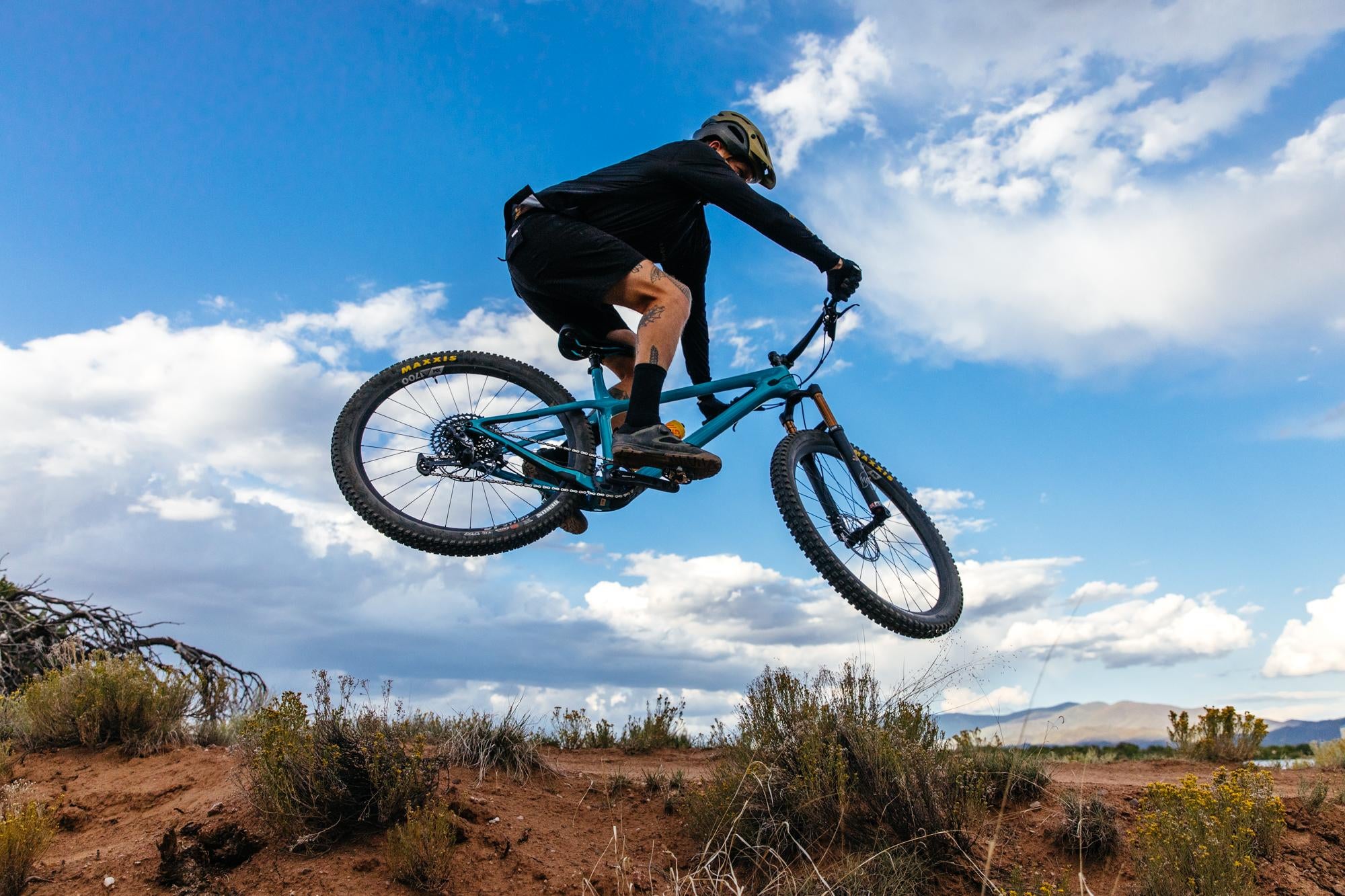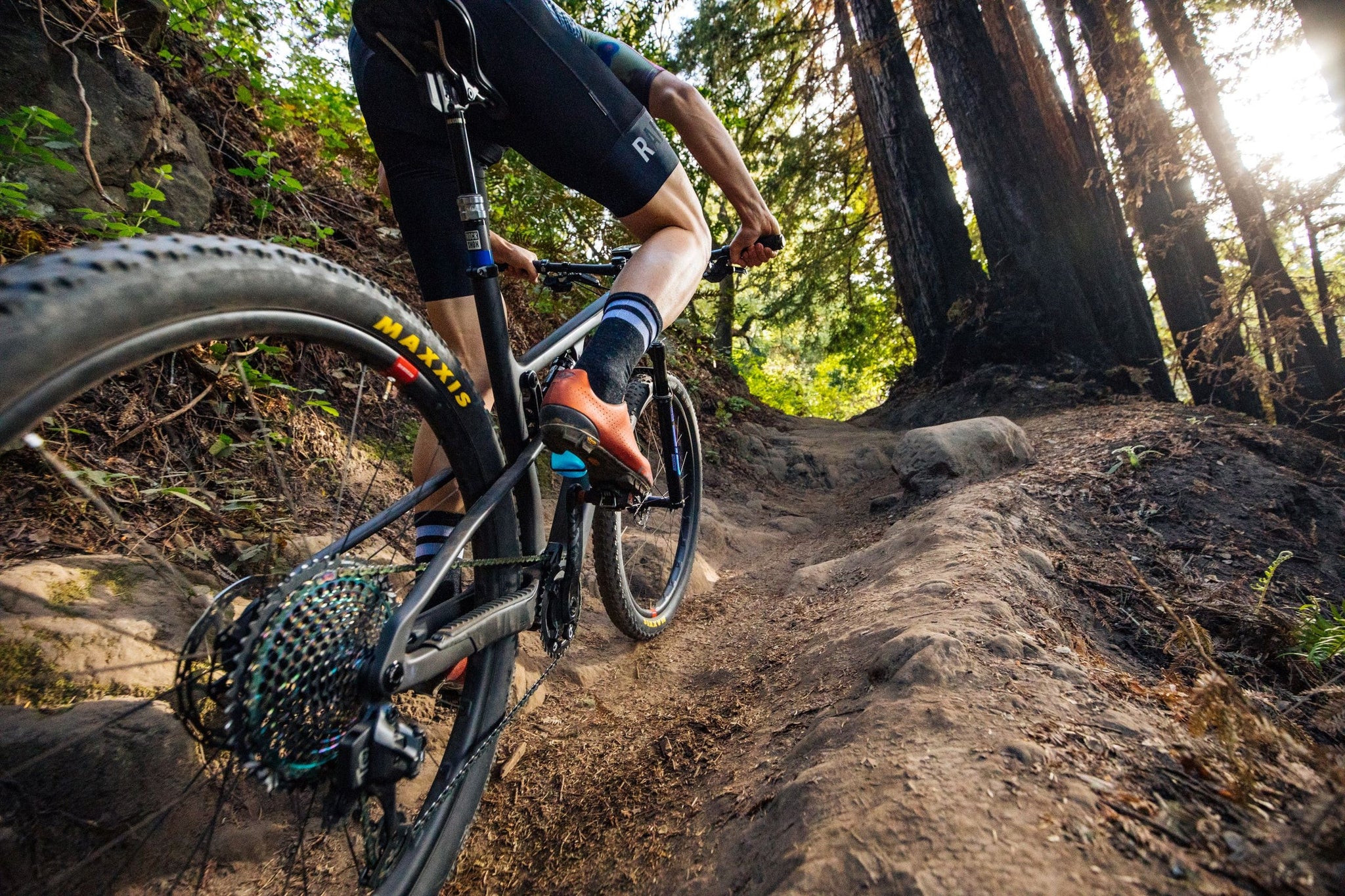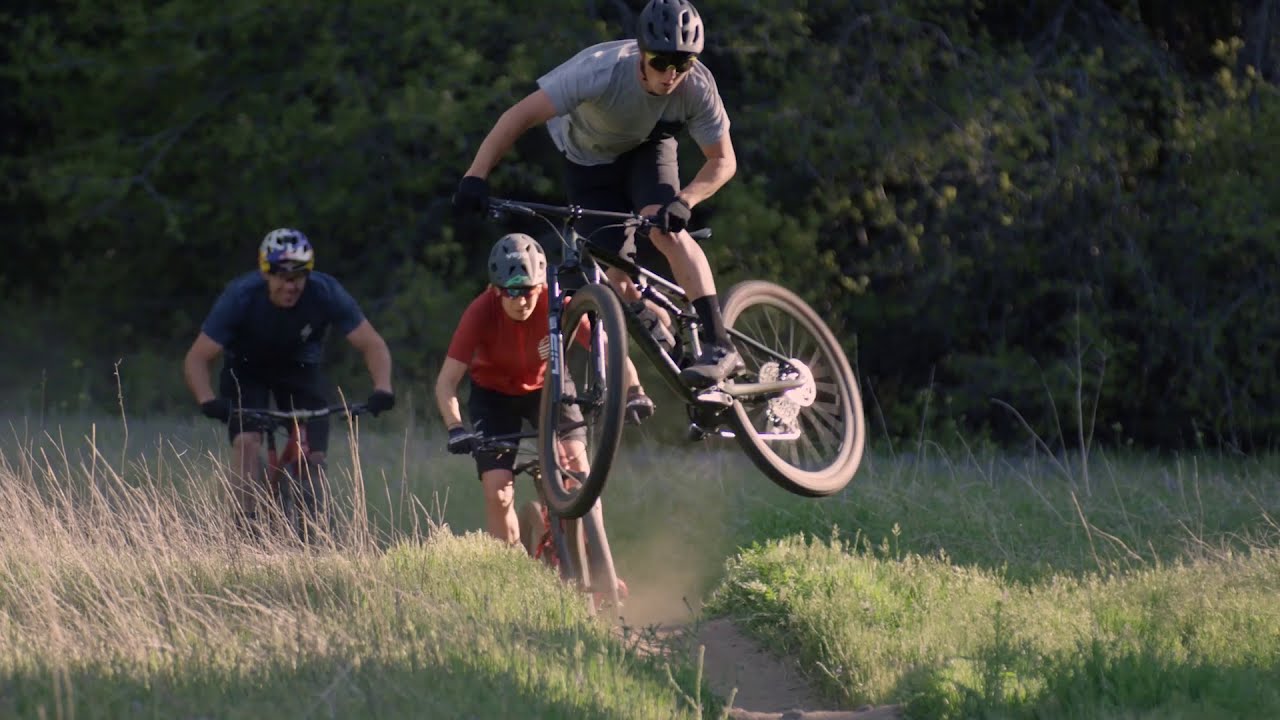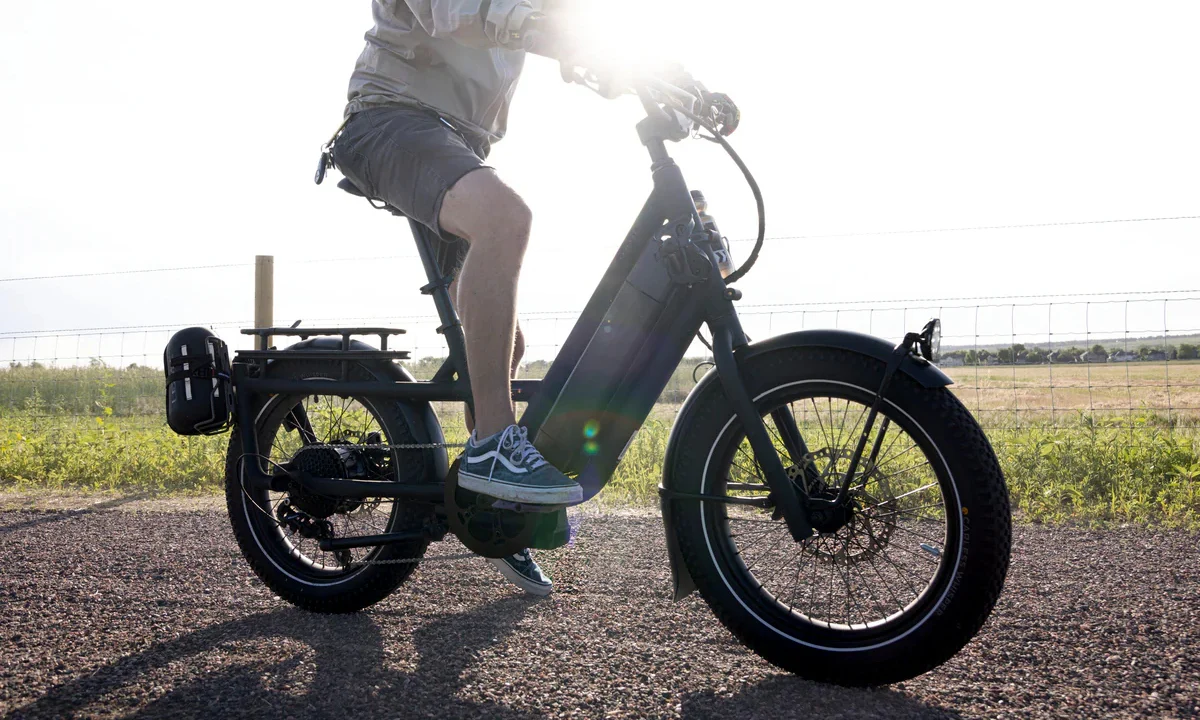The Yeti SB100 was one of the first dedicated downcountry bikes.
You may have heard the word “downcountry” bouncing around in the mountain bike world. If you're wondering what that means, simply put, a downcountry bike is a light and efficient short-travel mountain bike that is very good at climbing but also a capable descender.
A downcountry bike is not quite an all-out XC race bike. But it’s also not as laid-back as a mid-travel trail bike. It’s something in between. Sound vague? That’s because it is.
The bike industry likes to use catchy buzzwords like “downcountry,” and while they can be a bit arbitrary and have a lot of overlap with other terms, they can also be helpful for riders trying to understand exactly what a bike is designed to do. We’ll explain what makes a bike fit into the downcountry category, who they’re for, and provide some examples of popular models.
XC vs. Downcountry Bike Overview
|
Cross-Country Bike |
Downcountry |
|
|
Rear Suspension Travel |
65-120mm |
100-120mm |
|
Fork Travel |
100-110mm |
120-130mm |
|
Key Characteristics |
Generally lighter |
Generally more rugged |
|
Best Use |
Competitive XC Racing |
Technical XC trails |
Here are some examples of popular full-suspension cross-country and downcountry bikes:
Popular XC Race Bikes:
- Specialized Epic / Epic World Cup
- Trek Supercaliber
- Cannondale Scalpel
- Scott Spark RC
- Giant Anthem
Popular Downcountry Bikes:
- Specialized Epic EVO
- Trek Top Fuel
- Cannondale Scalpel SE
- Scott Spark
- Giant Trance
The Origin of “Downcountry” Mountain Bikes
The word “downcountry” was coined in 2018 in a Pinkbike op-ed written by Mike Levy titled “What the Heck is a Down-Country Bike?” At the time, Levy described downcountry as “a strange, hard to define fusion of cross-country, trail, and possibly even the all-mountain segments." Regarding the name, he said, "I propose the silly down-country label only to mock how the two-wheeled world tries to be neatly classified, but I do believe that we are seeing the emergence of a new type of bike.”
So the word “downcountry” started out as a bit of a joke, but it was describing a real thing riders were doing out on the trails. Modern XC bike geometry is catching up with trail and enduro bikes. With slacker head angles and longer reaches, they weren't as sketchy on downhill terrain as they used to be.
Riders started taking these progressive XC bikes and beefing them up with trail/enduro components to make them even more capable and confidence-inspiring when riding downhill. This was downcountry — cross-country, but with a downhill slant. The name stuck, and a new category was born.
What Is a Downcountry Mountain Bike Now?
 Modern bikes like the Transition Spur are part of a new breed of purpose-built downcountry bikes. Photo: Transition
Modern bikes like the Transition Spur are part of a new breed of purpose-built downcountry bikes. Photo: Transition
Depending on the manufacturer, a downcountry bike could either be a beefed up XC model, or a slimmed down short-travel trail bike. Think of it as "XC-plus" or "Trail-light."
The key to a good downcountry bike is an efficient pedaling platform and lightweight frame. This XC-like foundation is then enhanced with trail-oriented components like bigger forks, knobbier tires, and gravity-oriented cockpits that allow riders to push harder and feel more confident on descents.
A downcountry bike can still climb, sprint, race, and eat miles like an XC race bike, but it sacrifices some race speed and weight so that it's easier to handle and more fun to ride on fast, steep, and gnarly terrain. It's a great option for regular trail riders who like climbing and pedaling hard but aren't racing XC competitively.
 Light but capable hardtails like the Yeti ARC can be downcountry too. Photo: Cari Carmen
Light but capable hardtails like the Yeti ARC can be downcountry too. Photo: Cari Carmen
Here are the key features a modern downcountry bike will have:
- 100-120mm rear suspension travel (or hardtail)
- 120-130mm suspension fork
- 29” x 2.3-2.6” tires
- Wider handlebars + shorter stems
- Dropper seatpost
- Head angle slacker than 68-degrees
- Weight less than ~28 pounds
 The Santa Cruz Blur TR uses an efficient XC suspension design so it can climb like the standard Blur XC bike. Photo: Santa Cruz
The Santa Cruz Blur TR uses an efficient XC suspension design so it can climb like the standard Blur XC bike. Photo: Santa Cruz
For a downcountry bike, rear suspension travel will fall somewhere between 100-120mm. A bike with any less than that (e.g. a Trek Supercaliber or Specialized Epic World Cup) is likely geared more toward pure XC racing. Any more and you begin to leave the world of XC and enter trail bike territory.
 120-130mm travel forks give XC-style frames more room for error. Photo: Specialized
120-130mm travel forks give XC-style frames more room for error. Photo: Specialized
Forks on downcountry bikes generally have 120-130mm travel. Very often, lighter downcountry bikes will use a 120mm XC-style fork like a Fox 34 Step-Cast or RockShox SID, while more aggressive downcountry bikes might take things a step further with a 130mm trail fork like a Fox 34 or RockShox Pike. Again, any bigger, and you enter trail bike territory.
29” wheels are pretty much the standard because that’s what modern XC race bikes use too. Tires will vary depending on your terrain and riding goals, but they'll usually be on the wider end of the spectrum — between 2.3-2.6” — for more comfort and traction.
 Wide riser bars and short stems make it easy to stay in control on tough descents. Photo: Rocky Mountain
Wide riser bars and short stems make it easy to stay in control on tough descents. Photo: Rocky Mountain
While many XC race bikes might use long and low cockpit setups, downcountry bikes tend to have a more trail-oriented cockpits with wider, high-rise bars and shorter stems which create a more upright position for more stability and control on descents.
Of course, a dropper seatpost is also essential for downhill comfort and performance. If a bike has a rigid seatpost, then it’s probably not a downcountry bike. Simple as that.
When it comes to geometry, head angle is key. Most downcountry bikes come with a head angle between 65-67 degrees, which provides a good balance between climbing agility and downhill stability. Any steeper, and you begin to sacrifice downhill performance.
 Light and efficient downcountry bikes like the Rocky Mountain Element are great for long-distance adventures on tough terrain. Photo: Rocky Mountain
Light and efficient downcountry bikes like the Rocky Mountain Element are great for long-distance adventures on tough terrain. Photo: Rocky Mountain
Finally, a downcountry bike should ideally weigh less than a comparable trail bike. Otherwise, what’s the point in choosing a downcountry bike over a trail bike? Most modern trail bikes sit between 28-32 pounds, so it should be lighter than that. A downcountry bike will never be as light as a pure XC race bike, but that’s the idea. It splits the difference between XC and trail to create a nice compromise.
Who Should Ride a Downcountry Bike?
If you're curious where downcountry bikes excel, check out classic mountain bike events like BC Bike Race, Downieville Classic, Breck Epic, or Moab Rocks. These races feature massive climbs where an XC bike will save a lot of time. But they have equally massive descents that feature technical sections and gnarly features. Trail or enduro bikes are probably faster on these types of descents, but a downcountry bike can hang, especially under a good rider. When you factor in the uphills, a downcountry bike will be overall faster.
The type of rider who wants to maximize overall speed on trails that combine tough uphills and gnarly downhills is the type who will probably want a downcountry bike.
This rider cares about the XC side of the sport: climbing, fitness, and pedaling hard. They don't want to carry around the extra cushion or weight of a mid-travel trail bike. But they also want to push their limits on the downhills without worrying about breaking their bike (or body). They're caught between two words — XC and trail — and downcountry is the solution.

























